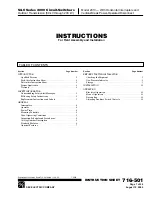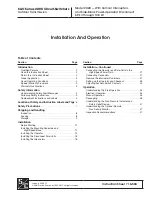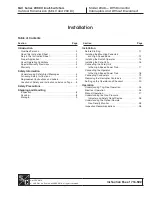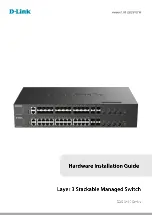
12
Software version used
This configuration example was created and verified on S7500EX-CMW710-R7168.
Configuration restrictions and guidelines
An aggregation group can operate in static or dynamic mode. You can choose one mode as required.
•
In a static aggregation group, the aggregation states of the member ports are not affected by the
peer ports. Static link aggregation is stable.
•
In a dynamic aggregation group, the local system and the peer system automatically maintain the
aggregation states of the member ports. Dynamic link aggregation reduces the administrators'
workload.
Configuration procedures
1.
Configure Device A:
# Create Layer 3 aggregate interface Route-Aggregation 1. Use one of the following methods as
needed.
{
Use the static aggregation mode to create Layer 3 aggregate interface Route-Aggregation 1.
<DeviceA> system-view
[DeviceA] interface route-aggregation 1
{
Use the dynamic aggregation mode to create Layer 3 aggregate interface Route-Aggregation
1.
<DeviceA> system-view
[DeviceA] interface route-aggregation 1
[DeviceA-Route-Aggregation1] link-aggregation mode dynamic
# Configure an IP address and subnet mask for Layer 3 aggregate interface Route-Aggregation 1.
[DeviceA-Route-Aggregation1] ip address 192.168.1.1 24
[DeviceA-Route-Aggregation1] quit
# Assign ports Ten-GigabitEthernet 1/0/1 through Ten-GigabitEthernet 1/0/3 to aggregation
group 1.
[DeviceA] interface range ten-gigabitethernet 1/0/1 to ten-gigabitethernet 1/0/3
[DeviceA-if-range] port link-aggregation group 1
[DeviceA-if-range] quit
2.
Configure Device B in the same way Device A is configured. (Details not shown.)
Verifying the configuration
# Display detailed information about the link aggregation groups on Device A.
•
Link aggregation configuration information when the static aggregation mode is used:
[DeviceA] display link-aggregation verbose
Loadsharing Type: Shar -- Loadsharing, NonS -- Non-Loadsharing
Port Status: S -- Selected, U -- Unselected
Flags: A -- LACP_Activity, B -- LACP_Timeout, C -- Aggregation,


































